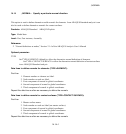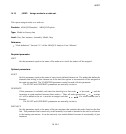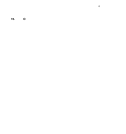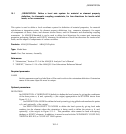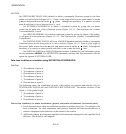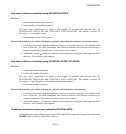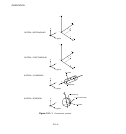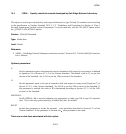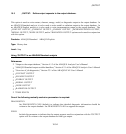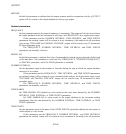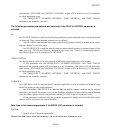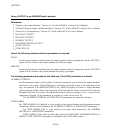
*
ORIENTATION
Data lines to define an orientation using DEFINITION=NODES:
First line:
1. Node number of the node at point a .
2. Node number of the node at point b.
The next item, specification of point c (the origin), is optional and relevant only f or
SYSTEM=RECTANGULAR and SYSTEM=Z RECTANGULAR. The default location of
the origin, c, is the global origin.
3. Node number of the node at point c.
Second line (mandatory for shells, membranes, gaskets, composite solid sections, and contact pairs):
1. Local direction about which the additional rotation or rotations are given. The default is the
local 1-direction. For shell, membrane, and cohesive elements this direction should have a
nonzero component in the direction of the normal to the surface.
2. Additional rotation
(in degrees) applied to both directions orthogonal to the specified local
direction. The default is zero degrees.
Data lines to define an orientation using D EFINITION=OFFSET TO NODES:
First line:
1. Local node number of point a.
2. Local node number of point b.
The next item, specification of point c (the origin), is optional and relevant only f or
SYSTEM=RECTANGULAR and SYSTEM=Z RECTANGULAR. The default location of
the origin, c, is the first node of the element (local node number 1).
3. Local node number of point c.
Second line (mandatory for shells, membranes, gaskets, and composite solid sections):
1. Local direction about which the additional rotation or rotations are given. The default is the
local 1-direction. For shell, membrane, and cohesive elements this direction should have a
nonzero component in the direction of the normal to the surface.
2. Additional rotation
(in degrees) applied to both directions orthogonal to the specified local
direction. The default is zero degrees.
To define an orientation using a user subroutine (SYSTEM=USER):
No data lines are used with t his option when SYSTEM=USER is spec ified. Instead, user subroutine
ORIENT must be used to define the orientation.
15.1–3
ABAQUS Version 6.1 Module:
ID:
Printed on:



